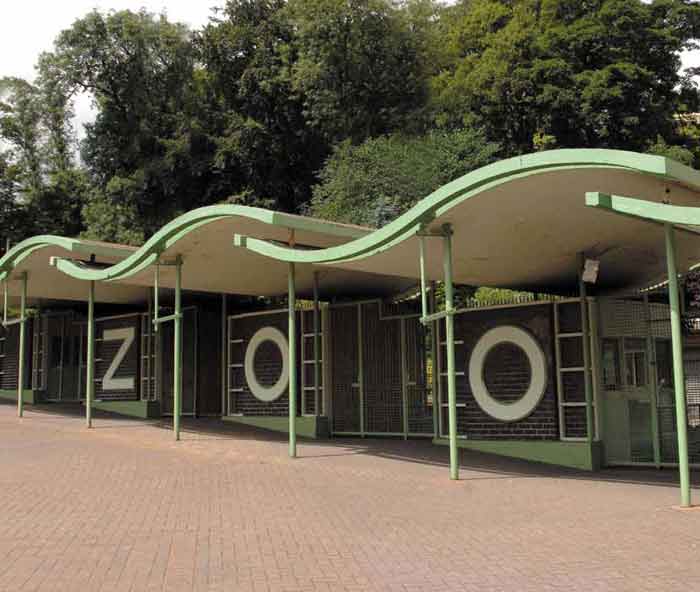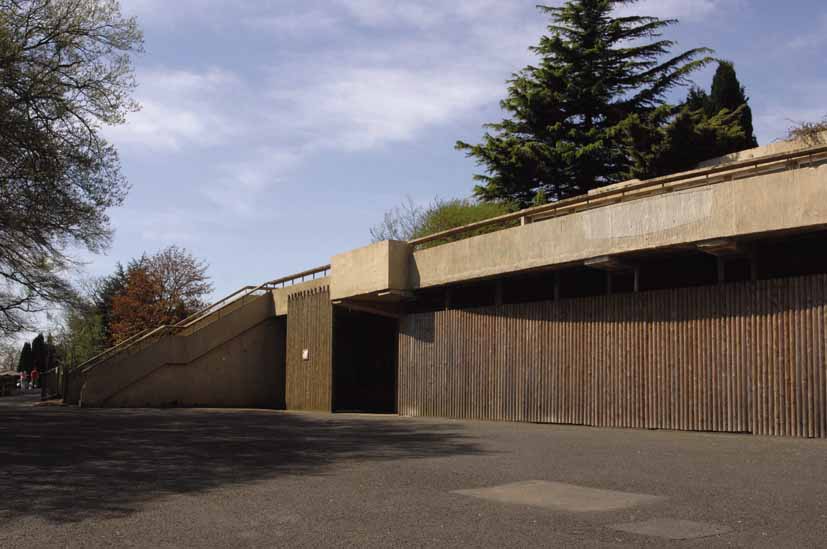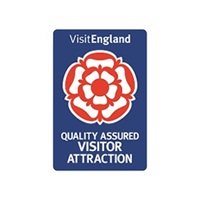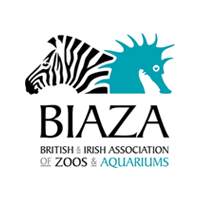Tectons
The architects chosen to design Dudley Zoo were renowned Modernists, calling themselves The Tecton Group, led by Russian-born Berthold Lubetkin.
They viewed the zoo as a microcosm of society, and aimed to protect the welfare of the animals while meeting visitors’ demands for a clear view from a safe position.
Using reinforced concrete Lubetkin’s team created a revolutionary new design of building: Tectons.
Zoo Entrance

A row of five gates with eight turnstiles and ticket offices, through which 30 million visitors have passed since 1937. The roof consists of a series of S-shaped interlocking canopies constructed of reinforced concrete and supported on steel columns.
Safari Cafe

A long single split level building with concrete framing and nine inch diameter columns to the frontage, which originally had four doorways. Originally the Safari Cafe, it is currently used as the Safari Gift Shop.
Polar bear complex

An existing ravine was adapted to provide a trio of enclosures for polar bears, tigers and lions. One of the most exciting uses of the Tecton technique, it was built into an old quarried area on the southern side of the hill.
A major structure, it was intended for polar bears at the centre and big cats to either side. The circular polar bear pit was placed in the centre with an elevated terrace around it which bridges the ravine and affords excellent views into the three enclosures.
Bear Ravine

A substantial structure with a shaped retaining wall and cantilevered terrace affording views into the enclosure. During excavation for foundations an unexpected cavity, approximately 15 metres deep, was discovered prompting radical amendments to the original design.
Sealion Pool

A pair of symmetrical shaped pools connected under a central bridge which leads into the castle courtyard. Smooth concrete slabs to the rear for the sealions to rest upon are connected to the pools by ramps. Public viewing balconies originally overlooked the deeper parts of the pool. The sealion pools sit in the moat of the castle.
Castle Restaurant

Also known as the Queen Mary Suite.
A single storey building with an arch enclosing the central entrance which runs back as a barrel vault. Its shape suggests inspiration drawn from the great ocean-going liners of the era.
Moat Cafe

A split-level structure, it is a long serpentine building originally designed to be left open at the front, but was largely enclosed by glazed panels at a later date. Circular columns support the roof and main structure at the rear where there is a basement storey which can be reached from a path that branches off the walkway to the primate houses.
Currently used as Discovery Centre education block.
Tropical Birdhouse

A circular building on two storeys with a cantilevered balcony offering views over the surrounding paddock. The reinforced concrete section over the central area of the roof, in the shape of a shallow inverted cone, is structurally separate from the outer walls, being connected only by a glazed roof light which forms a complete circle. Steps lead on to an area beneath where a transformer was originally located.
Elephant House

This structure had to be kept as low as possible to comply with Ministry requirements for buildings close to the castle. Its top forms a terrace flush with the ground so that the view from the castle is not spoilt. It is single storey with a slightly curved and glazed front and clerestory which rises through the terrace above. Flanking staircases lead to a higher level.
Reptiliary

A simple low concrete wall supporting a flat overhanging slab on which the public could lean.
Built on the slopes of the castle it was originally used as a vivarium, but in recent times the snakes have been transferred to a more suitable home in the nearby Reptile House and the building has become home to a group of meerkats. This is the site’s only Tecton structure retaining its original finish.
Kiosks 1 and 2

Elliptical in shape with a canopy supported on metal stanchions. They were originally used for confectionery and ice cream sales.
Today’s environmental health restrictions mean they can no longer be used for their original use and currently function as display areas.









